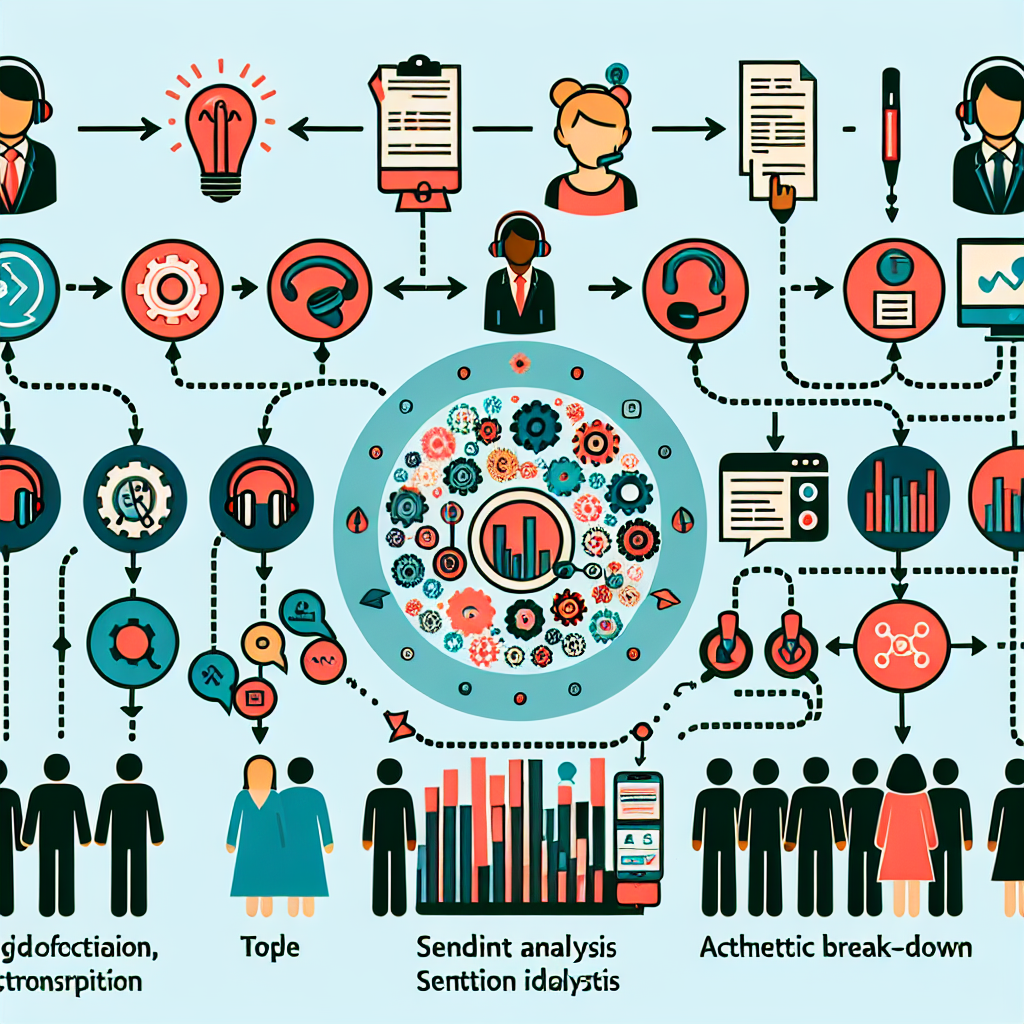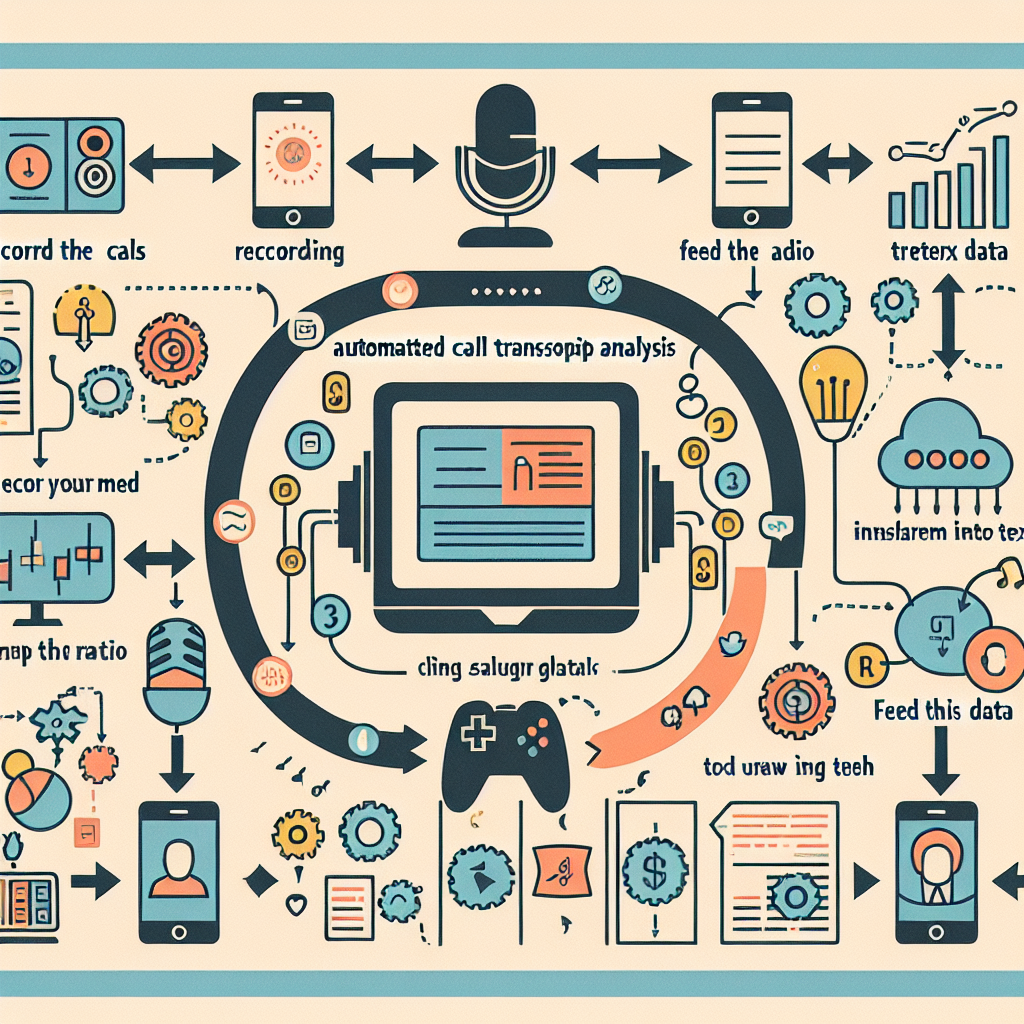
In an era of digitalization, companies are continually seeking ways to leverage data for insightful business decisions. One such method is through the use of the highly efficient technology known as Automated Call Transcript Analysis. By applying automated AI-based transcription services to customer phone calls, businesses can simplify and enhance the process of information gathering and analysis, providing valuable insights into customer satisfaction, product feedback, and service efficiency.

Traditionally, the method of gathering data from customer calls was a laborious process that did not guarantee accuracy or efficiency. But with the advent of Automated Call Transcript Analysis, key details from every customer interaction can be effortlessly extracted. As a result, businesses gain a better understanding of their customer base, which informs strategic decisions and helps in identifying areas of improvement.
This innovative analytical process utilizes machine learning and natural language processing (NLP) to transcribe and analyze customer calls. The automated mechanism not only transcribes the verbal communication but also identifies emotions, sentiment, context, and essential keywords. By doing so, a wealth of Business Intelligence can be uncovered, dramatically changing the way businesses understand their customers' needs and preferences.
Through Automated Call Transcript Analysis, companies can maintain a competitive edge by staying one step ahead in understanding their customers. Rather than relying on manual transcript analysis, businesses can depend on this effective, time-saving, and comparatively error-free methodology. The meticulousness offered by Automated Call Transcript Analysis easily makes it one of the most powerful tools in the armory of Business Intelligence.
In the forthcoming sections, we will delve deeper into the potential of this ingenious technology. Further, we will outline its various applications and elucidate how it can significantly enhance your company's business strategy and operational performance.
The realm of Automated Call Transcript Analysis is powered predominantly by advancements in Artificial Intelligence (AI) and Machine Learning (ML). These emerging technologies channel the capability to structure vast amounts of unstructured voice data into meaningful, actionable insights. By teaching computers to mimic human cognition, AI and ML deepen the understanding, enabling interpretation of the latent knowledge existing in the seemingly ordinary call transcripts.
Speech recognition technology, a significant segment under the AI umbrella, plays a vital role in automating call transcript analysis. Speech recognition listens to spoken word, translates it into text and familiarizes with speech patterns, accents and languages. Companies like Google and Microsoft offer advanced speech-to-text services that are widely used in business realms.
On the other hand, Machine Learning algorithms analyze the transcribed text to derive valuable insights effectively. ML algorithms can identify trending keywords, phrases, and sentiments from the call transcripts. These algorithms, empowered by Natural Language Processing (NLP), can understand the context, extract meaning, and even learn to predict future outcomes based on the historical data.
The fusion of AI and ML in automated call transcript analysis reduces manual intervention, enormously increasing the accuracy, efficiency, and effectiveness of the process. Furthermore, these emerging technologies allow businesses to unlock an intricate wealth of intel that was previously impalpable due to the unstructured nature of voice data.
In the era of data-driven decision making, Automated Call Transcript Analysis has emerged as a powerful tool for uncovering business intelligence. Integrated with speech-to-text technologies, it allows businesses to sift through vast amounts of call data, yielding insights that can be harnessed to enhance customer service, streamline operations, and bolster marketing strategies.

Firstly, in terms of customer service, transcript analysis can identify commonly raised issues, helping businesses prioritize their customer service efforts. Real-time analysis also allows service agents to instantly access a call's history, ensuring incisive responses and fostering customer satisfaction.
Then, in the arena of operations, call transcripts can unveil procedural bottlenecks or areas of inefficiency. Businesses can use these insights to fine-tune their processes, leading to increased operational efficiency and cost savings.
Finally, from a marketing standpoint, call transcript analysis can highlight what products or services customers are discussing most frequently. These insights can inform targeted marketing campaigns and aid in the development of new products or features. Additionally, understanding customer sentiment, deciphered through natural language processing technologies, can help businesses tailor their messaging to match customer emotions and preferences.
In summary, the ability of Automated Call Transcript Analysis to turn unstructured voice data into structured textual data, ripe for in-depth analysis, is helping businesses gain unprecedented insights. As a future-forward technology, it promises to keep revolutionizing how businesses listen to, understand, and respond to their customers.
Automated Call Transcript Analysis is a powerful tool, harnessing the power of AI and machine learning technologies to provide critical business intelligence. Here, we highlight two real-world applications, from leading companies that implemented these tools successfully and experienced improvement in customer interaction and overall business growth.
Case Study 1: Vodafone
Vodafone, a multinational telecommunications company, had an immense amount of call data that was arduous to analyze manually. In an effort to improve customer experience and streamline their operations, they adopted an automated call transcript analysis solution. With this, they were able to gain insights from over 600,000 hours of call recordings. Notably, the tool enabled them to uncover customer pain points and understand the effectiveness of their agents, leading to process improvements and an uplift in customer satisfaction scores. Indeed, within one year of application, Vodafone reported a significant increase in NPS scores, affirming the efficacy of automated call transcript analysis.
Case Study 2: Amazon
Another compelling case is that of Amazon, one of the biggest online retailers worldwide. Amazon used an automated call transcript analysis tool as part of their Amazon Transcribe service. This helped them analyze millions of customer service calls effectively, identify trends in customer queries, and streamline their services accordingly. As a result, they were able to bring about significant improvements to their online platform, leading to an increase in customer retention and sales growth. Amazon's success story demonstrates that with the right application, automated call transcript analysis can wield powerful business benefits.
In conclusion, these case studies underscore the potential of Automated Call Transcript Analysis in extracting valuable insights from vast amounts of call data. The intelligence garnered can propel the enhancement of customer interaction models and underpin strategic business growth.
With the advent of automated call transcript analysis, businesses are unlocking unprecedented insights into customer behavior, sentiment, and needs. Employing these powerful tools, however, involves careful planning and measured implementation. In this context, we will focus on three crucial steps: Initial setup, staff training, and system maintenance.

Initial setup is centered around seamlessly integrating the software with your current systems. Many vendors offer flexible application programming interfaces (APIs) or options for custom integration. Opt for products which dovetail with your existing technology stack, minimizing disruption to current business processes. Zendesk, for instance, offers seamless out-of-the-box integration with its suite of customer service and sales tools.
Next, staff training is critical. It ensures your team understands the nuances of the software and can leverage its capabilities to the fullest. Engaging employees from the onset fosters ownership and paves the way for smoother adoption. Many vendors provide comprehensive training materials, tutorials, and support channels to assist in this process.
Finally, consider system maintenance. Regular updates and patches are necessary to ensure software reliability and security over the long haul. Carefully evaluate the vendor's track record in delivering timely updates and maintainance. Equally important is having a dedicated internal team or contact point for troubleshooting and managing the system.
Implementing automated call transcript analysis tools can be a gamechanger for businesses, turning demanding customer service data into actionable business intelligence. The journey, while involving deliberate planning and orchestration, promises substantial returns on competence, customer understanding, and ultimately, competitive advantage.
The landscape of automated call transcript analysis is ever-evolving, promising a future brimming with exciting trends and developments.
One of the most pivotal advancements at the forefront of this field is the increasing sophistication of AI capabilities. Thanks to the continuous evolution of machine learning, AI can increasingly grasp the subtleties of human conversation, even those that involve complex phrasing, sarcasm, and emotion. This not only ensures more accurate transcriptions but also allows companies to dive deeper into their call analysis, offering invaluable insights into customer sentiments, behavior, and engagement. Further reading on AI advancements can be found here.
Another game-changer for transcript analysis lies in the broadening of analytics scope. In the future, transcript analysis won't just be limited to phone calls – we will begin to see automated transcript analysis applied to a wider variety of communication channels, such as emails, social media interactions, and even video calls. This form of analysis will help businesses in constructing a comprehensive picture of customer interactions, allowing them to refine and deliver an enhanced customer experience. This paper provides more details about the scope of analytics in customer interactions.
The rise of predictive analytics in transcript analysis is also worth noting. By analyzing past interactions, AI will be able to predict future customer behavior, enabling businesses to proactively improve their service delivery. Click here to explore more on predictive analytics and its implications.
In conclusion, the future of automated call transcript analysis is set to revolutionize business intelligence, with the integration of more nuanced AI capabilities and a holistic approach to analytics. These advancements suggest a future where understanding our customers and improving services based on these insights will become simpler than ever.
Start your free trial for My AI Front Desk today, it takes minutes to setup!








